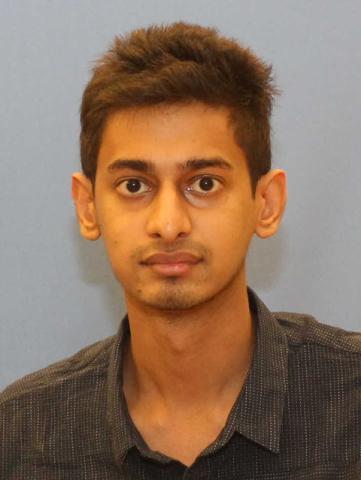ECE Ph.D. student Pranav Gupta received a Best Paper Award at the Solid-State Sensors, Actuators, and Microsystems 2018 Workshop, held June 3-7 at Hilton Head Island, South Carolina.
Pranav Gupta received a Best Paper Award at the Solid-State Sensors, Actuators, and Microsystems 2018 Workshop, held June 3-7 at Hilton Head Island, South Carolina. He is a Ph.D. student in the Georgia Tech School of Electrical and Computer Engineering (ECE) and is a member of the Integrated Micro-Electro-Mechanical Systems (IMEMS) Lab, which led by Farrokh Ayazi.
Gupta was honored for his paper entitled “Precision High-Bandwidth Out-of-Plane Accelerometer as Contact Microphone for Body-Worn Auscultation Devices.” His co-authors are former and current IMEMS Lab members Yaesuk Jeong, Jaehoo Choi, Mark Faingold, and Anosh Daruwalla, along with Dr. Ayazi, who holds a Ken Byers Professorship in ECE.
In this paper, Gupta and his colleagues demonstrated the use of "Accelerometer Contact Microphones (ACM)" as auscultation devices in body-worn sensor arrays. The wafer-level-packaged ACM devices are only a few millimeters on a side and exhibit wide bandwidth (fres >10 kHz) and low-noise (<10 µg√Hz), thereby picking up tiny ‘micro-gravity-level’ accelerations from the body. These MEMS devices use nano-gap electrostatic transducers and are only sensitive to vibrations from their contact surface and not to air-borne acoustic emissions. This attribute makes them ideal for use in wearable applications. Normal breath sounds in the range of 600-1000Hz, along with phonocardiogram (PCG) and ballistocardiogram (BCG) signals, are extracted by mounting the device on the chest of a person.
By using these ACM devices, a wearable, long-term monitoring system for evaluation of cardiopulmonary health is created. These devices allow physicians to enhance the conventional auscultation method by improving accuracy of diagnosis, serving as an early detection system, as well as enabling them to listen to heart and lung sounds of patients without being limited or compromised by body motion. The wide bandwidth of the ACM allows capturing high-fidelity heart and lung sounds in the audible frequency range (20Hz-20kHz), along with low frequency (<20Hz) BCG signals from the body simultaneously. Additional health parameters such as heart rate and respiratory rate are also extracted.
These ACM devices can also track body motion and activity, and can also be used in localizing the sound source within the body. The ACM serves as a major step towards the goal of integrating multiple sensors into a smaller form-factor with increased functionality and precision performance and opens new gateways in telemedicine and remote health monitoring. This work was supported by a seed grant from the Georgia Tech Institute for Electronics and Nanotechnology/Emory Center for Micro/Nano-Engineered Medical Devices.
